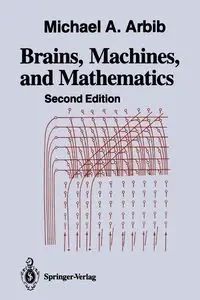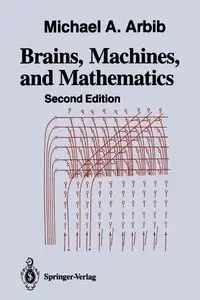Brains, Machines, and Mathematics - Michael A. Arbib
Brains, Machines, and Mathematics - Michael A. Arbib
AutorzyMichael A. Arbib
EAN: 9781461291534
Marka
Symbol
313HKE03527KS
Rok wydania
2011
Strony
224
Oprawa
Miekka
Format
15.6x23.4cm
Język
angielski

Bez ryzyka
14 dni na łatwy zwrot

Szeroki asortyment
ponad milion pozycji

Niskie ceny i rabaty
nawet do 50% każdego dnia
Niepotwierdzona zakupem
Ocena: /5
Marka
Symbol
313HKE03527KS
Kod producenta
9781461291534
Rok wydania
2011
Strony
224
Oprawa
Miekka
Format
15.6x23.4cm
Język
angielski
Autorzy
Michael A. Arbib

This is a book whose time has come-again. The first edition (published by McGraw-Hill in 1964) was written in 1962, and it celebrated a number of approaches to developing an automata theory that could provide insights
into the processing of information in brainlike machines, making it accessible to readers with no more than a college freshman's knowledge of mathematics. The book introduced many readers to aspects of cybernetics-the study of
computation and control in animal and machine. But by the mid-1960s, many workers abandoned the integrated study of brains and machines to pursue artificial intelligence (AI) as an end in itself-the programming of computers to
exhibit some aspects of human intelligence, but with the emphasis on achieving some benchmark of performance rather than on capturing the mechanisms by which humans were themselves intelligent. Some workers tried to use
concepts from AI to model human cognition using computer programs, but were so dominated by the metaphor "the mind is a computer" that many argued that the mind must share with the computers of the 1960s the property of being
serial, of executing a series of operations one at a time. As the 1960s became the 1970s, this trend continued. Meanwhile, experi mental neuroscience saw an exploration of new data on the anatomy and physiology of neural
circuitry, but little of this research placed these circuits in the context of overall behavior, and little was informed by theoretical con cepts beyond feedback mechanisms and feature detectors.
EAN: 9781461291534
EAN: 9781461291534
Niepotwierdzona zakupem
Ocena: /5
Zapytaj o produkt
Niepotwierdzona zakupem
Ocena: /5
Napisz swoją opinię

